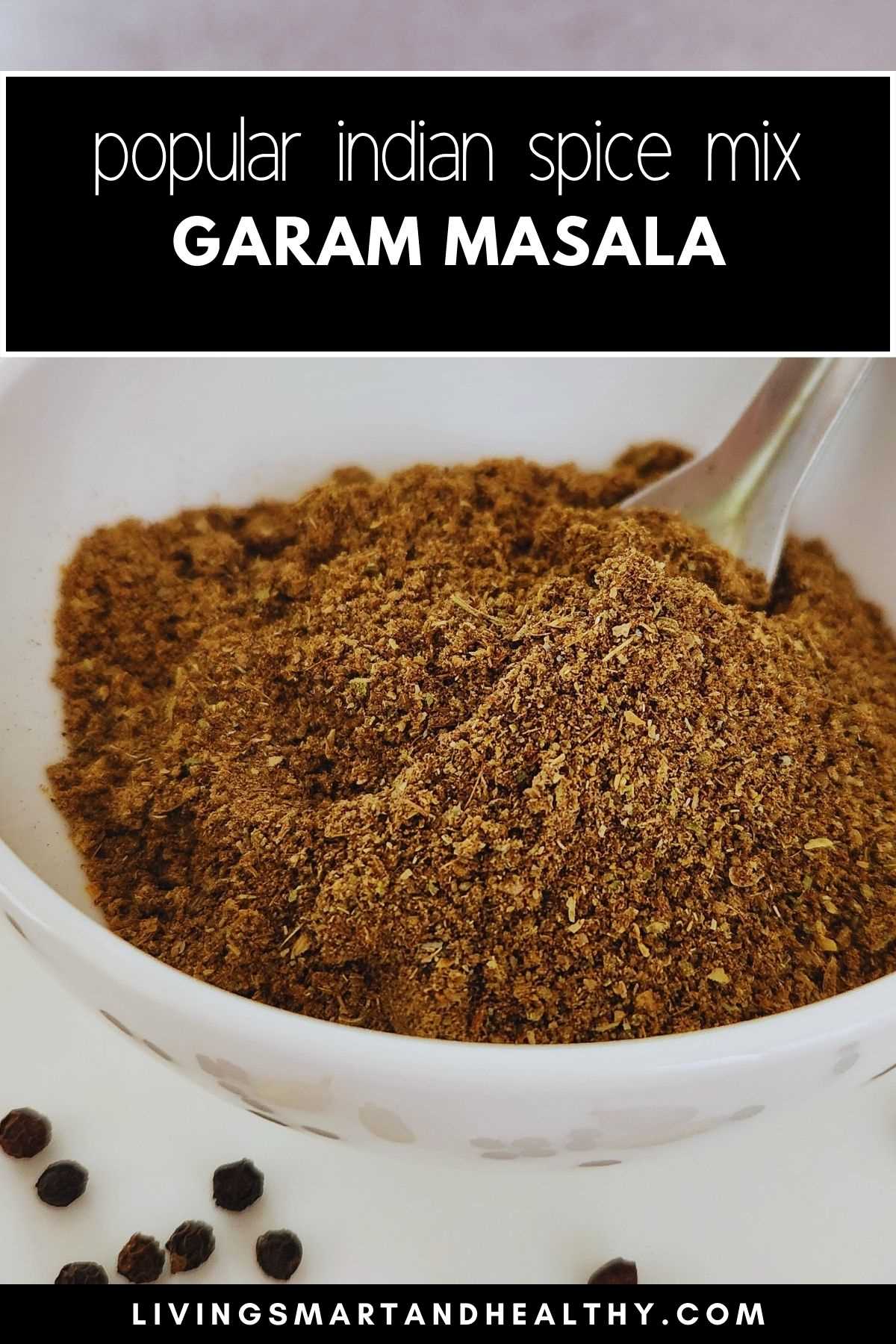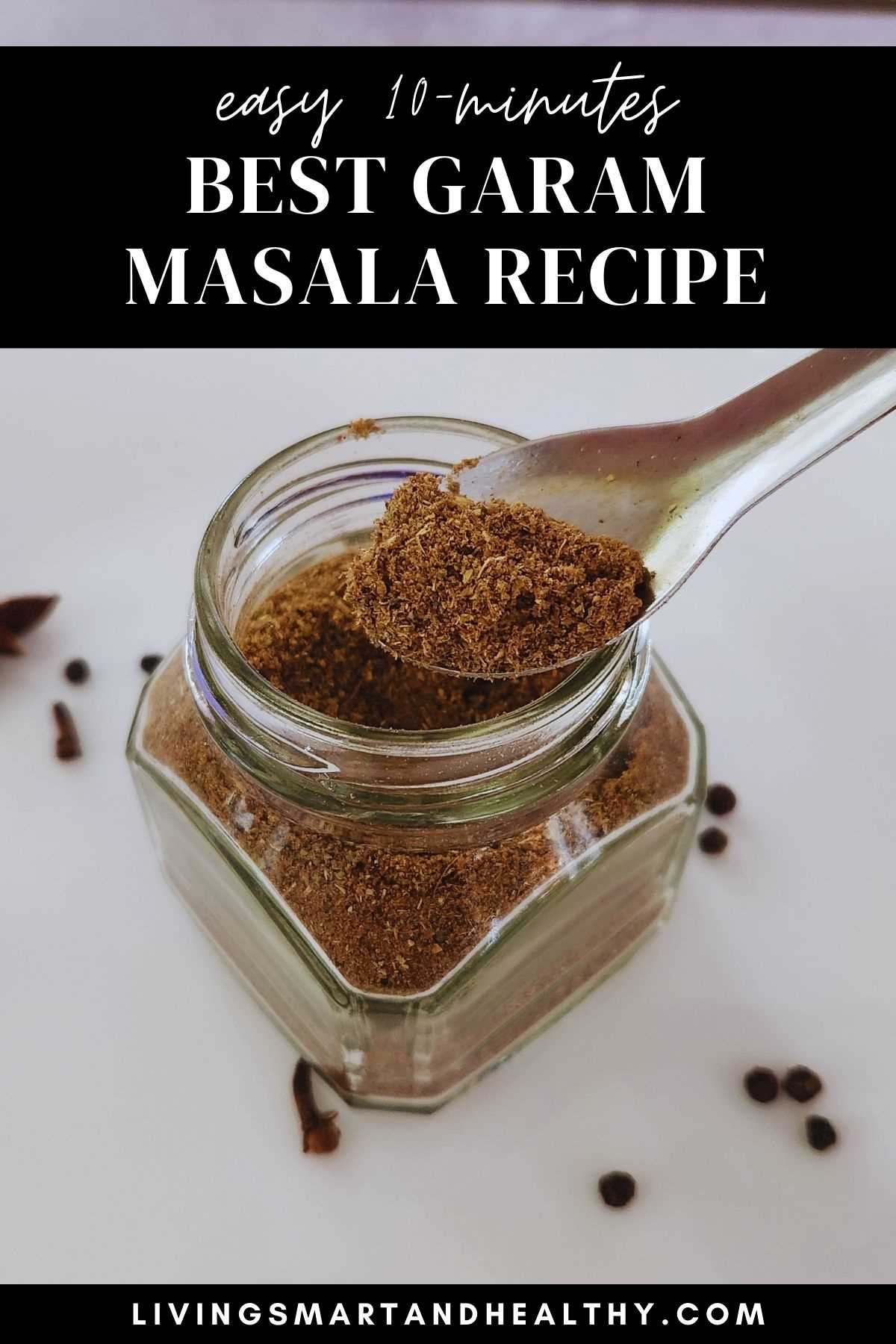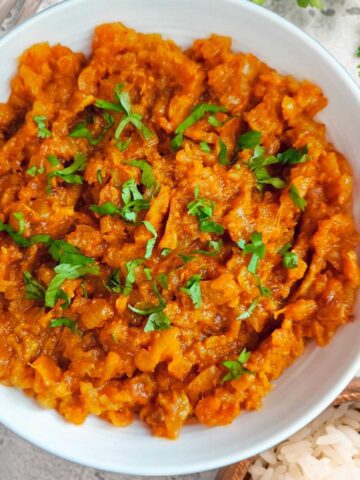Garam Masala, an aromatic spice blend that adds depth and richness to your favorite dishes. Embrace the flavors of Indian cuisine and elevate your culinary creations with this delightful blend of warm and exotic spices.

Garam masala is a popular spice blend used in Indian cuisine. It consists of a combination of ground spices, such as cumin, coriander, cardamom, cinnamon, cloves, and black pepper, among others.
Garam masala adds a warm and aromatic flavor to various dishes, enhancing the overall taste and aroma of Indian curries, stews, rice dishes, and more.
It is a versatile spice mix that can be adjusted to suit individual preferences and regional variations, making it an essential component of many Indian households' spice cabinets.
Garam masala is added to dishes toward the end of the cooking process to enhance the flavor and aroma.
It provides a warm and earthy flavor profile and is commonly used in various Indian dishes, including curries, stews, biryanis, and lentil preparations. It is a versatile spice blend that can also be used to season grilled or roasted meats and vegetables.
If you ask me one spice I cannot absolutely live without is this homemade garam masala. It is an absolute must in my home.
For many years, my mom used to make garam masala for me and send it to me. Last year when I visited back home, I learned this recipe from my mom.
To make garam masala, whole spices are first lightly roasted to enhance their flavors. This step is crucial as it releases the essential oils and changes the taste profile.
After roasting, the spices are left to cool before being ground into a fine powder using a spice grinder or mortar and pestle. The result is a rich, aromatic, and balanced spice blend.
Every home in India has its version of garam masala. This recipe is my family recipe, which has been passed down from generations. It is one of the best recipes you will find for homemade garam masala.
Jump to:

What Is Garam Masala
Garam masala is a popular spice blend used in Indian cuisine. The term "garam" means "hot" or "warm" in Hindi, not referring to spiciness but to the warming properties of the spices used. "Masala" means "mixture" in Hindi.
Garam masala is typically made by grinding together a combination of warm and aromatic spices such as cumin, coriander, cardamom, cinnamon, cloves, black pepper, and nutmeg.
It adds a rich and complex flavor to various dishes, enhancing the taste and aroma of Indian curries, stews, rice dishes, and more.
The blend can vary depending on regional and individual preferences, making it a versatile and essential spice in Indian households.
What Is In Garam Masala
Garam masala is a blend of ground spices. Here are some of the commonly used spices:
Cumin: Cumin seeds are roasted and ground to contribute a warm, nutty, and slightly earthy flavor to the masala.
Coriander: Coriander seeds are roasted and ground to add a citrusy, sweet, and aromatic element.
Black Pepper: Ground black peppercorns bring spiciness and depth to the blend.
Fennel Seeds: Fennel seeds have a sweet and slightly licorice-like taste, which sets them apart from the other spices in garam masala. This flavor adds a pleasant and aromatic note to the overall spice blend.
Cardamom: Both green and black cardamom pods are used. Green cardamom is sweet and floral, while black cardamom has a smoky and earthy flavor.
Cloves: Cloves add a pungent, sweet, and slightly bitter taste to the mix.
Star Anise: Star anise has a potent and licorice-like flavor, which is both sweet and slightly spicy. It adds a unique complexity to dishes.
Cinnamon: Cinnamon sticks are ground to provide a sweet, woody, and slightly spicy note.
Mace: Mace has a slightly sweeter and milder taste compared to nutmeg, but it still carries a warm and aromatic flavor profile. It is less pungent than nutmeg, making it an excellent addition to garam masala to balance the overall spice blend.
Nutmeg: Nutmeg is used in small quantities due to its strong flavor, offering a warm and slightly sweet taste.
Bay Leaves: Dried bay leaves contribute a subtle, aromatic quality.

How To Make Garam Masala
Making garam masala at home is simple and allows you to customize the blend to your taste preferences. Here's a recipe for homemade garam masala:
Dry Roast the Whole Spices: In a dry skillet, add the cumin seeds, coriander seeds, cardamom pods, fennel seeds, cinnamon stick, cloves, mace, nutmeg, black peppercorns, star anise, and bay leaf.
Heat them over low to medium heat, stirring constantly, until they become fragrant and start to slightly change color. This should take about 2-3 minutes. Be careful not to burn them.
Cool the Spices: Remove the spices from the skillet and allow them to cool completely. This prevents them from continuing to roast in the residual heat.
Combine and Grind: In a spice grinder or mortar and pestle, combine the roasted spices, grated nutmeg, and dried bay leaves. Grind them into a fine powder. If you don't have a spice grinder, you can use a clean coffee grinder.
Sieve (Optional): If you want a super fine powder, you can pass the ground spice blend through a fine sieve to remove any larger bits or husks.
Store: Transfer your homemade garam masala to an airtight container. Store it in a cool, dark place, away from heat and moisture.
Use: Your homemade garam masala is ready to use in your favorite recipes! Add it toward the end of the cooking process to preserve its flavor and aroma.
Feel free to adjust the proportions of the spices to suit your taste. Homemade garam masala is a wonderful way to add a personal touch to your Indian-inspired dishes and enjoy the vibrant flavors of freshly ground spices.

Variations
Garam masala is a versatile spice blend, and its composition can vary widely depending on regional preferences, individual households, and personal tastes. Here are some of the common variations of garam masala:
North Indian Garam Masala: This is one of the most popular variations of garam masala and is commonly used in North Indian cuisine.
It typically includes a blend of warming spices like cumin, coriander, cardamom, cinnamon, cloves, and black pepper. The proportions may vary, with some versions emphasizing stronger flavors of cinnamon and cloves.
South Indian Garam Masala: In South India, garam masala is often referred to as "Sambar Powder" or "Rasam Powder."
While the core spices like cumin, coriander, and black pepper remain common, it might also include ingredients like fenugreek seeds, mustard seeds, and curry leaves, giving it a unique flavor distinct from the North Indian version.
Maharashtrian Goda Masala: This spice blend is widely used in Maharashtrian cuisine, particularly in dishes like Masale Bhat and Kolhapuri curries.
It includes many of the standard garam masala spices but also incorporates additional ingredients like bay leaves, sesame seeds, dry coconut, and stone flower (dagad phool), which contribute to its rich and earthy flavor.
Punjabi Garam Masala: Punjabi cuisine often uses a robust and pungent garam masala. It contains the standard spices but can also include black and green cardamom for additional depth.
Some versions may incorporate dried ginger and mace for a distinctive touch.
Gujarati Garam Masala: This version typically focuses on fragrant spices and may have a sweeter and milder taste compared to other garam masalas. It commonly includes spices like cumin, coriander, cinnamon, and cloves.
Spicy Garam Masala: For those who prefer a spicier kick, you can increase the proportion of black pepper or add a touch of red chili powder to the standard garam masala blend. This variation works well in dishes that benefit from an extra spicy flavor.
Mild Garam Masala: On the other hand, if you prefer a milder taste, you can reduce the amount of black pepper or omit it altogether. This will tone down the spiciness while retaining the warmth of other spices.

Storage
Proper storage is essential to maintain the freshness, flavor, and aroma of garam masala or any spice blend. Here are some tips on how to store garam masala effectively:
Airtight Container: Transfer the garam masala to an airtight container immediately after preparing it.
Cool and Dry Location: Store the container in a cool, dry place away from direct sunlight, moisture, and heat. Avoid placing it near the stove or any other heat source, as exposure to heat can cause the spices to lose their potency.
Use Within Six Months: While garam masala can last longer, it is best to use it within six months to ensure optimal flavor and aroma. Over time, the spices may lose their potency and the blend's taste may become less vibrant.
Smell and Taste Test: If you're unsure about the freshness of your garam masala, give it a smell and taste test. Fresh garam masala should have a strong and aromatic fragrance, and its flavors should be well-balanced. If it lacks potency or tastes flat, it might be time to replace it.
Make Small Batches: If you make your own garam masala at home, consider making smaller batches to ensure you use it within the recommended time frame. This will also allow you to customize the blend according to your taste preferences.

Tips
Here are some tips and tricks to make the most of your garam masala and enhance your cooking:
Balance the Flavors: Garam masala should add warmth and depth to your dishes without overpowering them. Start with a small amount and adjust according to your taste preferences. It's easier to add more spice later than to tone it down if you've added too much.
Toast Whole Spices: If you have whole spices available, consider toasting them lightly before grinding them to release their essential oils and intensify their flavors. Just be careful not to burn them, as it can make the garam masala bitter.
Use in the Right Timing: Add garam masala toward the end of the cooking process to preserve its flavors and aromas. If cooked for too long, the delicate spice blend can lose its potency.
Pair it Smartly: Garam masala goes well with a wide range of dishes, including meat, poultry, vegetables, and legumes. It can be used in curries, stews, rice dishes, and even marinades for grilling or roasting.
Experiment with Homemade Blends: Explore different regional variations of garam masala or create your custom spice blend by adjusting the proportions of spices to suit your preferences.
Refresh Old Garam Masala: If your garam masala has been sitting in the pantry for a while and you find its flavor has diminished, you can try refreshing it by lightly toasting the blend in a dry pan for a minute or two. This can revive the spices and improve the aroma.
Enhance Sweet Dishes: Don't limit garam masala to savory dishes only. In small quantities, it can add a delightful twist to sweet treats like cookies, cakes, and fruit desserts.
Label and Date: If you prepare your garam masala at home, label the container with the name and date of preparation to keep track of its freshness.

FAQ's
Garam masala is made of a blend of ground spices, typically including cumin, coriander, cardamom, cinnamon, cloves, black pepper, and nutmeg, among others. It is a popular spice mix used in Indian cuisine to add warmth and complexity to dishes.
If you don't have garam masala, try to create a makeshift garam masala by combining ground cumin, coriander, cardamom, cinnamon, cloves, and black pepper in equal parts.
The purpose of garam masala is to enhance the flavor and aroma of dishes in Indian cuisine. It adds a warm and complex blend of spices that enriches various curries, stews, rice dishes, and other preparations, providing a signature taste and depth to the overall culinary experience.
No, garam masala is not the same as curry powder. While they both contain some common spices like cumin and coriander, garam masala typically includes additional spices like cardamom, cinnamon, cloves, and black pepper, giving it a distinct flavor profile different from curry powder.
Recipes Using Garam Masala
Best Garam Masala Recipe [Popular Indian Spice Mix]
Equipment
Ingredients
- ¼ cup cumin seeds
- ¼ cup coriander seeds
- 2 teaspoon whole black peppercorns
- 2 teaspoon fennel seeds
- 3-4 whole black cardamom
- 12-14 whole green cardamom
- 10-12 cloves
- 1 star anise
- 1 stick cinnamon
- small piece of mace about ½ inch
- ½ whole nutmeg
- 4-5 dried bay leaf
Instructions
- Dry Roast the Whole Spices: In a dry skillet, add the cumin seeds, coriander seeds, cardamom pods, fennel seeds, cinnamon stick, cloves, mace, nutmeg, black peppercorns, star anise, and bay leaf.
- Heat them over low to medium heat, stirring constantly, until they become fragrant and start to slightly change color. This should take about 2-3 minutes. Be careful not to burn them.
- Cool the Spices: Remove the spices from the skillet and allow them to cool completely. This prevents them from continuing to roast in the residual heat.
- Combine and Grind: In a spice grinder or mortar and pestle, combine the roasted spices, grated nutmeg, and dried bay leaves. Grind them into a fine powder. If you don't have a spice grinder, you can use a clean coffee grinder.
- Sieve (Optional): If you want a super fine powder, you can pass the ground spice blend through a fine sieve to remove any larger bits or husks.
- Store: Transfer your homemade garam masala to an airtight container. Store it in a cool, dark place, away from heat and moisture.
- Use: Your homemade garam masala is ready to use in your favorite recipes! Add it toward the end of the cooking process to preserve its flavor and aroma.
Notes
- Tips For Best Garam Masala Recipe
- FAQ's














Leave a Reply
You must be logged in to post a comment.